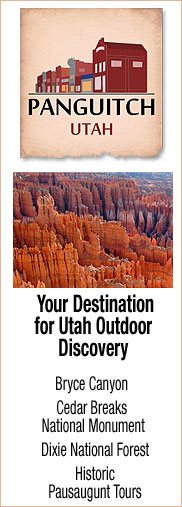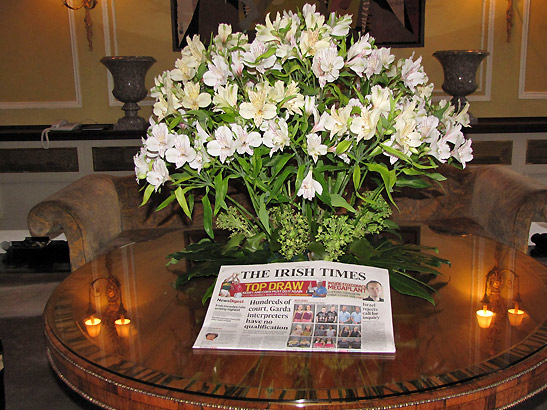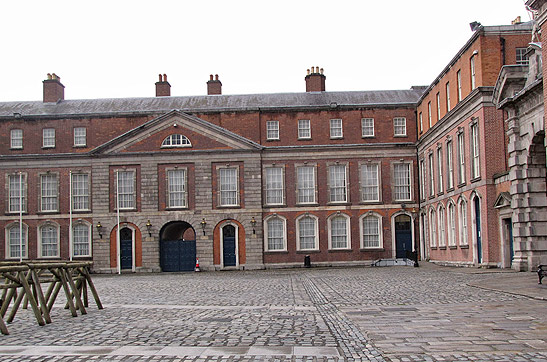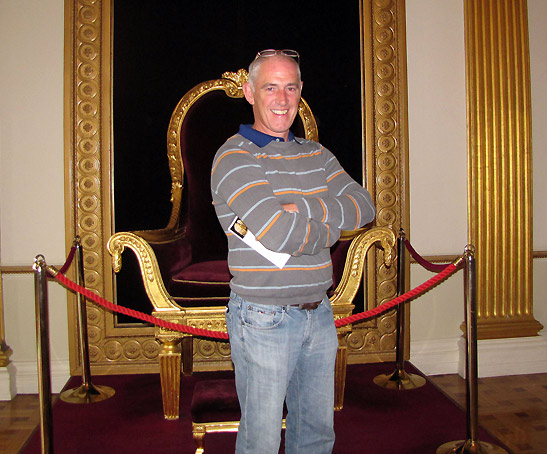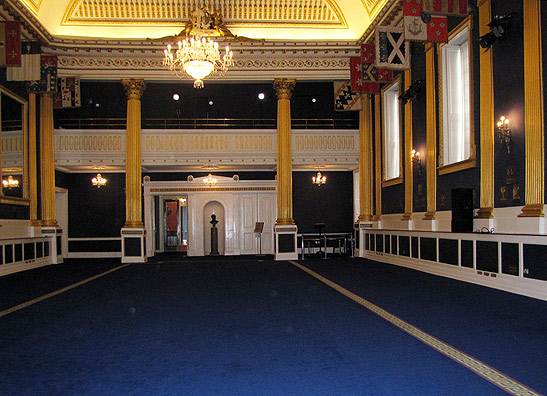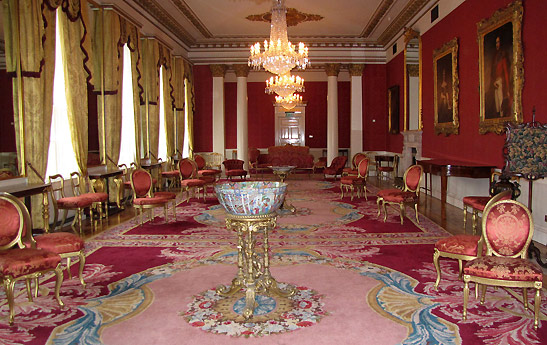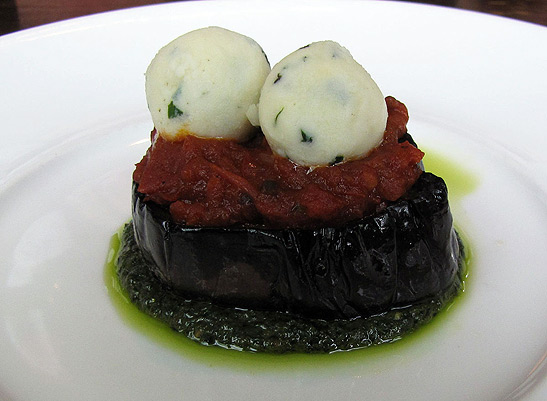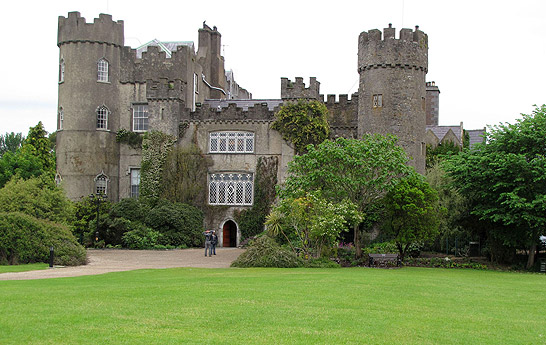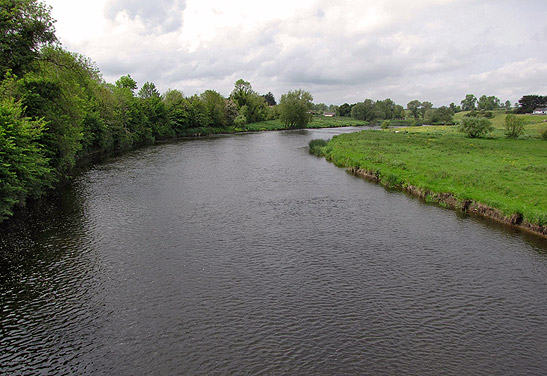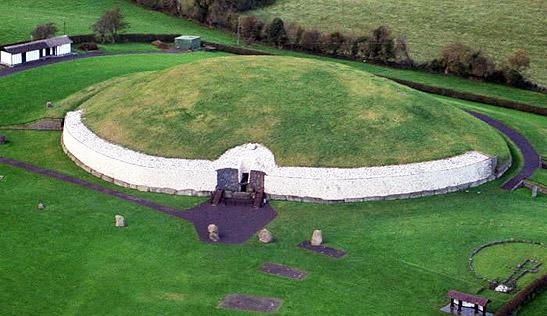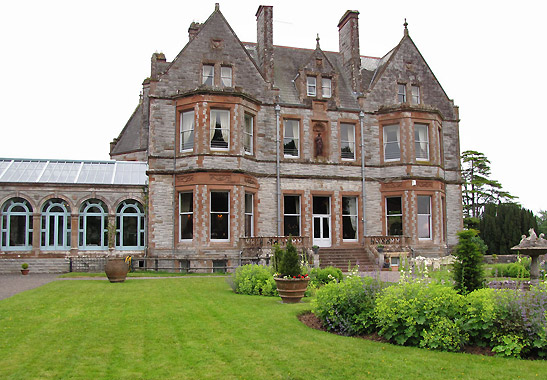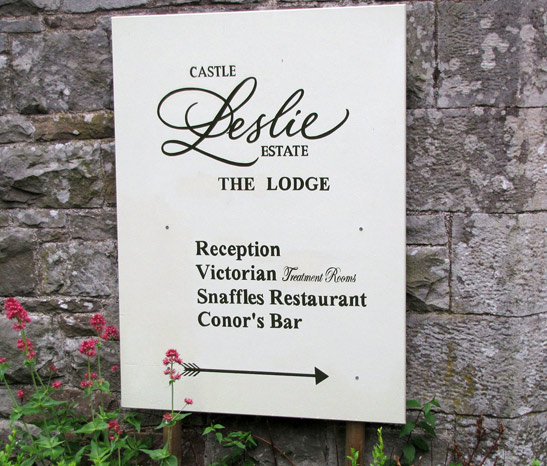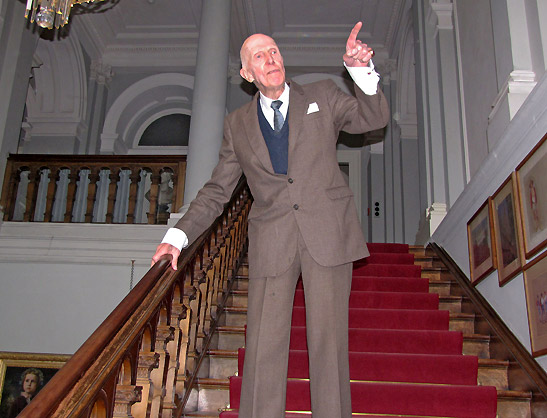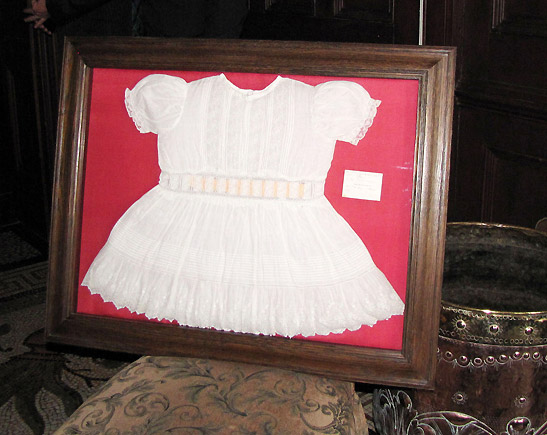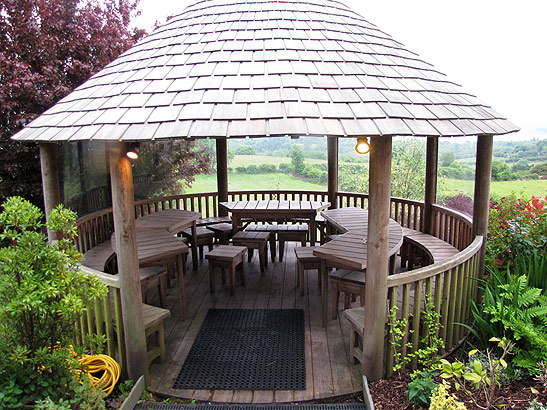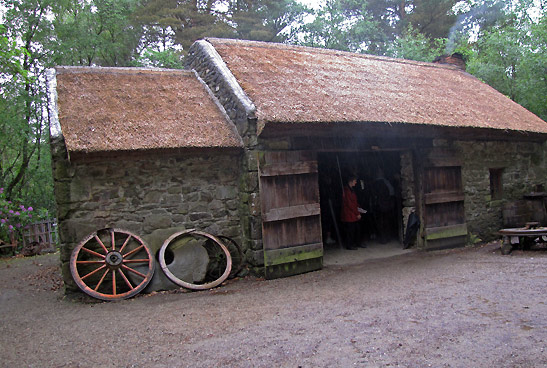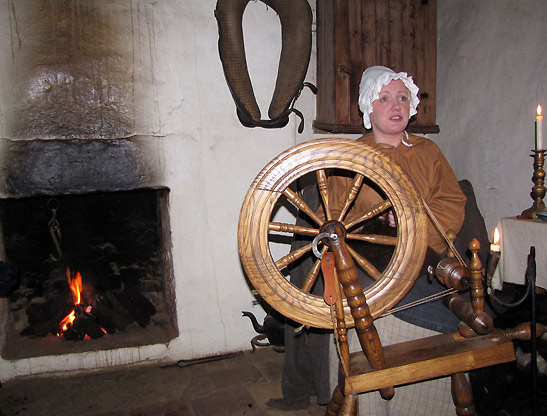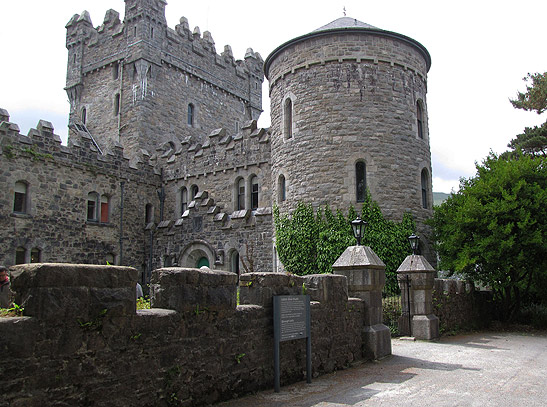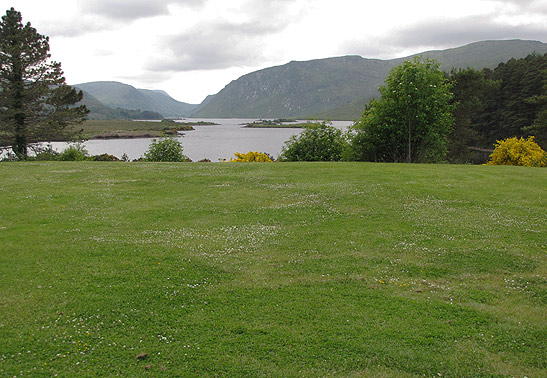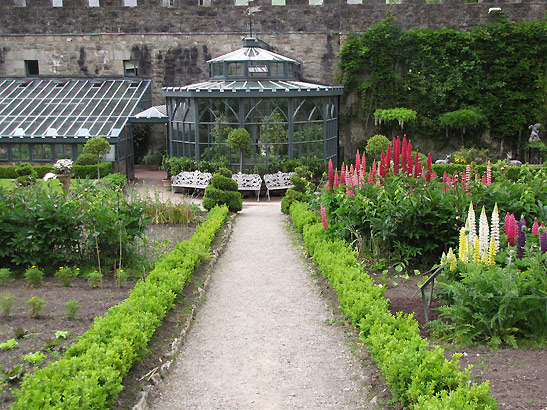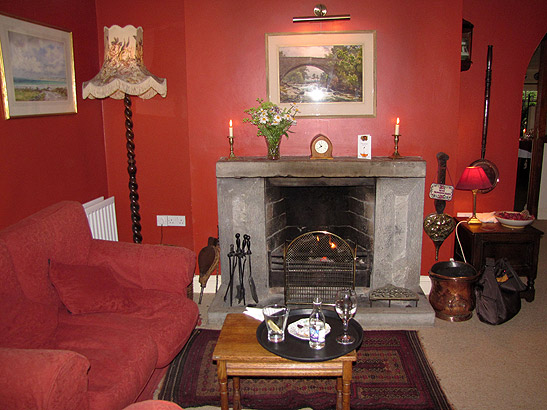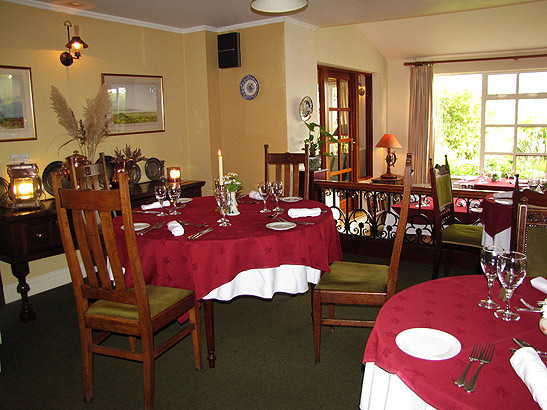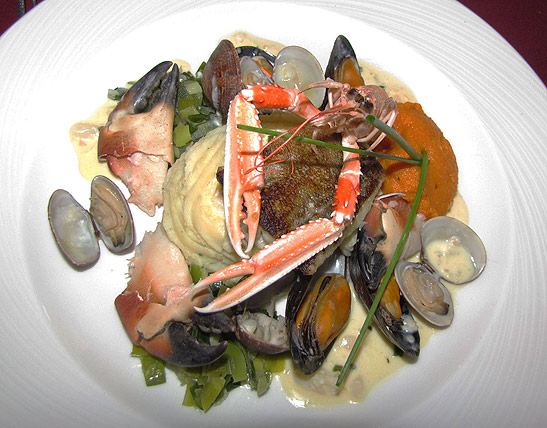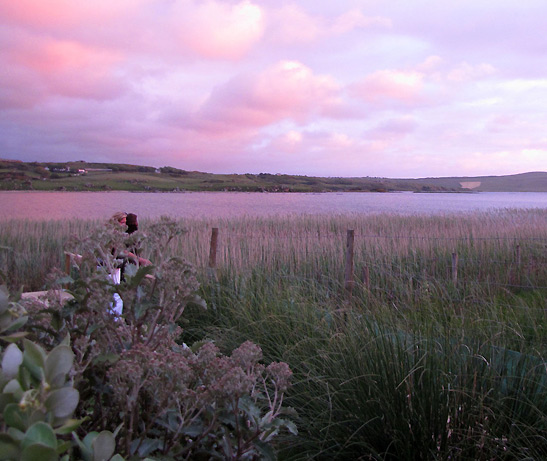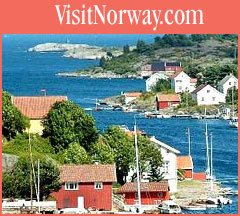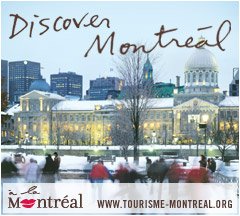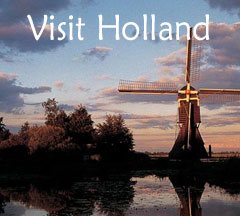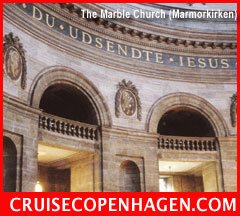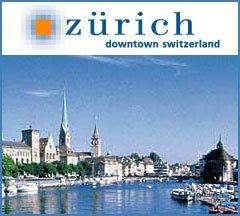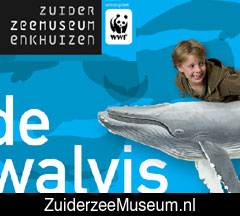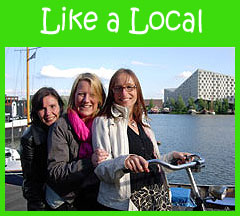 |
 |
|
 |

|
Ireland Part 1: Days 1 -3
Day 1:
The hotel staff was friendly and made our brief stay very comfortable. The rooms are spacious, bright, and tastefully decorated and exquisite artwork is on display throughout the hotel. Oh yes, for those of you who have had difficulty getting the “this side up” slide room keys to always work, the Merrion offers magnetic, non-slide keys that you simply touch to the lock and presto…the door opens. With several castles on our itinerary, this would be a good time to say a few words about them. It is estimated that there are over 4,000 castles in Ireland, ranging from ruins and castle towers to the regal castles of Irish chieftains and the very lavish castle hotels such as the elegant Adair Manor or Ashford Castle. Filled with fascinating history, according to legends, many of the castles come complete with a resident ghost or two. It should be noted that originally Irish castles were designed primarily for defense purposes and tended to be less ostentatious than their British counterparts. Generally the architecture in Ireland is a mix of Victorian, Georgian, and Medieval styles. Dublin Castle
The Dublin Castle has been transformed into a place of national prestige and hosts State functions, including presidential inaugurations. The meticulously preserved historic rooms, a fascinating look at the opulent days of yesteryear, include The Throne Room, James Connolly Room, the King and Queen’s Bedrooms (separate), The Drawing Room, and St. Patrick’s Hall.
Hugh Lane Gallery. Dinner was scheduled for 7:00 pm and our very hungry group headed over to Bleu Bistro Moderne, owned by restaurateur and award-winning chef, Eamonn O’Reilly. This airy, bistro-style restaurant, located in Joshua House on Dawson Street, has floor-to-ceiling windows, comfortable dark brown leather banquettes, and wooden furniture. The menu is comprised of European dishes with an Irish twist and includes such delectable selections as Fermanagh Free Range Chicken with Mushroom Risotto, and Red Wine Reduction, and Beef Bourguignon Pie, housed in Crisp Puff Pastry, with Creamed Potatoes and Glazed Carrots. For a starter, I tried the mouth-watering Warm Roast Aubergine and Goat Cheese, Tomato Fondue with Pesto and for dessert, the sinful Apple Crème Brulee, but the Lemon Rice Pudding with Blueberry Sorbet and Biscotti would also be a yummy choice.
It was a long day and after our delightful dinner, we headed back to the Merrion Hotel for our first night’s sleep in Dublin. Day 2:
Malahide Castle.
Newgrange
One of the most famous aspects of Newgrange Megalithic Passage Tomb is that at dawn on the Winter Solstice, a shaft of sunlight enters the chamber through an opening in the roof-box and the beam broadens as it moves down the passageway. This remarkable event lasts for about 17 minutes on the Winter Solstice, as well a few mornings before and after. This site is a definite must-see. To learn more about Ireland’s amazing history visit www.heritageireland.com.
The Castle at Castle Leslie Estate.
Following our pampering, we were given a pre-dinner special guided tour of the Castle Leslie by Sir John Norman Ide "Jack" Leslie, 4th Baronet, also known as Uncle Jack. Tall and stately, Uncle Jack looks like he’s straight out of central casting and clearly enjoys sharing the history of his home in which his ancestors have lived since the 1660s.
This 94-year-old gentleman moves quickly and gracefully up and down the stairs and in and out of the various rooms, never missing a beat in his story telling about the castle’s history and some of its famous visitors, which included Winston Churchill, Mick Jagger, Marianne Faithful, the Duke of Wellington, the Roosevelts, Wallis Simpson, and was the site of Sir Paul McCartney’s ill-fated marriage to Heather Mills.
Perhaps one of the things that keeps Sir John young and engaged is the local night life and he can frequently be seen enjoying himself at the Squealing Pig pub or disco dancing at The Forum. Only 80 minutes from Dublin, Castle Leslie is one the last bastions of family-run castle hotels in Ireland. Nestled on 1,000 acres of rolling, lush countryside, dotted with rural woods and lakes, the setting is perfect for an afternoon or evening stroll through beautiful gardens and wandering paths and do stop and sit in one of the gazebos for a few moments of peaceful bliss.
Following our delightful visit with Uncle Jack, dinner was served in Snaffles Brasserie located in the Hunting Lodge. The food is classic Irish cooking based on the Leslie clan’s recipes dating back centuries. Fresh ingredients are sourced daily and by the way, the fresh-baked breads, scones and homemade preserves are simply divine. Day 3: Ulster American Folk Park.
The period costumed re-enactor in each cottage demonstrates how daily tasks were executed, such as bread making, cooking, arts and crafts, embroidery, forging, spinning, and printing and shared “personal” tales about their lives. One particularly interesting demonstration was in the candle-lit Weaver’s Cottage, one of the few that had glass windowpanes, a sign of wealth in those days. A young woman sat at the spinning wheel and told stories of how she learned to sew as a child and that women produced the yarn and the men were the weavers. As she turned the wheel, she sang an Irish folk song about the monotony of life and told of the origin of the word “spinster,” which came from unmarried women who filled their time spinning. She showed us miniature replicas of adult clothing and talked about the natural dyes derived from a moss-like plant called “lichen.”
Perhaps the most visceral experience was walking through the life-size replica of an emigrant tall ship that has re-created the harsh living conditions that had to be endured for up to the twelve weeks it could take to reach America. Rows of wooden bunks housed up to 200 people and with the lack of proper food and sanitation, death was an everyday occurrence, with up to 50% of the passengers not surviving the journey. Despite these horrendous conditions, the promise of a new life compelled tens of thousands of people to take the risk. Once in America, Ulstermen, who played a vital role in the history of the United States, would build cabins similar to the ones they left behind in Ireland. Farm animals roam freely around the park and perhaps the only negative for an untrained nose is the intense smell of burning peat, used for heating, which permeates the park. Most Irish people like the smell because it’s familiar, but for the unfamiliar nose, it can be overwhelming.
Glenveagh National Park.
John George Adair built Glenveagh around 1870 and lived in it until his death in 1885. Subsequently, the castle was occupied by the IRA in 1922 but retreated when the Free State Army appeared. Filled with well-preserved original furnishings, the 30-minute guided tour will give you an in-depth peek into the lifestyle of a more elegant era.
The Mill Restaurant.
Susan greeted us warmly upon our arrival and invited us to relax in the tastefully furnished living room, set off by a stone fireplace, where we were served cocktails and given a menu.
The dining room is split level encased by many windows allowing an unobstructed view of the vista. Fresh flowers sit on the tables and the room is enhanced with soft lighting, with antiques adorning the little nooks and crannies scattered about the room.
The restaurant has an extensive, mostly organic seasonal menu. I selected the Horn Head Crab with Avocado and Sweet Corn Sorbet as the starter, followed by Monaghan Chicken - Lemon and Garlic Free Range Chicken with Sweet Pepper Risotto and a Tarragon Emulsion, followed by a luscious Puree of Pea, Apple and Curry Soup with Natural Yogurt. My meal was topped off with a refreshing Pink Grapefruit and Gin Sorbet. What a scrumptious end to a scintillating day and time to check into our next hotel.
Our evening was capped off by a stay at Arnolds Hotel, family-owned since 1922 in Dunfanaghy, County. Donegal. With the Sheephaven Bay serving as its backdrop, we were welcomed by a friendly staff and were escorted to each of our rooms. If you like horseback riding, their riding stables have the seal of approval from the Association of Irish Riding Establishments, the British Horse Society B.H.S., and the Irish Tourist Board. Weather permitting, you can take a stroll along Killahoey Beach to work up an appetite for dinner and then celebrate the end of the day with a pint in the Whiskey Fly Bar where you can relax, unwind, and listen to traditional music. Stay tuned for Part 2 of “Ireland - Magical, Mystical,
Delightful, Enchanting” |
|
Thanks so much for those lovely tourism photos, especially of Ireland. I certainly enjoyed all the places you suggested, and am working towards my next vacation. Don’t forget Cuba. That’s an exciting place. Rosalie, Los Angeles
Enjoyed your article on Mira Sorvino. Such an interesting background – family, education, career and now human rights activist. I'm not a gossip mag fan so getting more meaty news about movie celebrities from you gives me hope that there are some inteligent life forms in Hollywood. Peter Paul, Pasadena, CA
Thank you, Bev. This reminded me to go see the movie, "An Education," which I had already almost forgotten about, having seen the preview a few weeks ago. I enjoy this actress quite a bit--she has a uniqueness about her and she pulls me in. I enjoyed this. Sandeee, Seattle, WA
Thank you Beverly,I really enjoyed reading about your intimate conversation with Forest, of whom I am a great admirer. I look forward to seeing the film "Our Family Wedding." Yoka, Westlake Village, CA
Thank you for the sending me the beautiful article you wrote about Ireland. We will use your recomendations for hotels in the Southern part. We plan to also go to Dublin and some other Northern cities so I will get some recommendations for these from others. After reading your article, I am getting more excited about going. I think we will be in Ireland for 8 days altogether. Leah Mendelsohn, Santa Monica, CA
Very much enjoyed Ms. Cohn's article about Munich, especially the visuals. Though it has been 25 years since my last visit, the piece brought back countless pleasant memories of the city and the people!! Many thanks. Lawrence, Los Angeles * * * Marianplatz and that general area is truly one of the best Christmas celebrations in the world. Between that and Oktoberfest (which I can only imagine) Munich is one of the greatest cities in the world for major annual events. Christopher Dale, New York, NY
Hi Bev, you have done some wonderful pieces on some great celebs...Great work. The travel articles are just wonderful too. Scott Mueller, Huntington Beach, CA
Your great Zurich article makes me want to go there for the holidays! I love the photos, too, especially the ones of you in the sleigh, the view over the houses and the zoo! Anna Marie, Santa Monica, CA * * * Lovely article! As a European, and having been to Zurich (albeit in summer) I can vouch for this lovely city. Great pictures, too! Helene Robins, Santa Monica, CA
Hi Bev, Nice review, nice seeing you, nice website interface "...Talk to Bev" - Enjoy your Thanksgiving! Richard D. Kaye, Marina del Rey, CA
Hi Bev, Your interview with John Cusack is very interesting. I always wondered why these actors/actresses always get top billing when really, if you think about it, the real work come from the animators, writers and tech whizzes who spend far more hours on the movie than those actors. I know, I know, it's the all about marketing. The names of these actors are what bring in the big bucks. Still, I think these actors are way overpaid for the "little" that they do. I remember that once upon a time, the early animation classics never mentioned the voices behind the characters. I think it was only later when Walt Disney tapped into the voices of known celebrities like Walter Matthau in the Jungle Book or Zsa Zsa Gabor in The Rescuers that the voices became a marketing magnet. Keep up the good work. I enjoy your interviews as you peer into the lives of the Hollywood celebrities. Peter Paul of South Pasadena, CA
|
This site is designed and maintained by WYNK Marketing. Send all technical issues to: support@wynkmarketing.com

|


